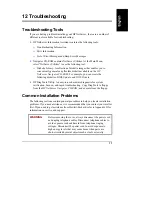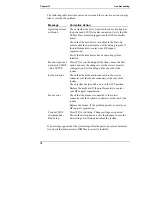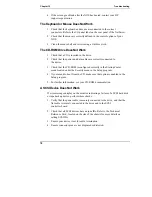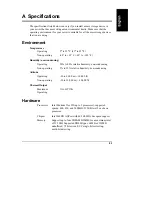
Chapter 12
Troubleshooting
73
WARNING
Before removing the cover, always unplug telephone cables
and disconnect the power cord. Unplug telephone cables to
avoid exposure to shock hazard from telephone ringing
voltages. Disconnect the power cord to avoid exposure to
high energy levels that may cause burns when parts are
short-circuited by metal objects such as tools or jewelry.
2. Simplify the HP NetServer configuration to the minimum required:
a
monitor, one flexible disk drive, one CD-ROM drive, one hard disk drive,
keyboard, mouse, and NIC. Remove all third-party options, and reinstall
one at a time, checking the system after each installation.
3. Boot the system. If the system does not function, consult the
troubleshooting steps in the section "Hardware Problems." If you get an
error message, see the section "Error Messages" below.
4. If the system still will not boot, clear the CMOS memory and reboot (see
"Clearing the CMOS Configuration").
Error Messages
If you get a POST error message, press Enter (View System Error) to get a more
detailed explanation and a possible solution.
No Error Messages Displayed
General Checks
1. All external cables and power cables are firmly plugged in.
2. The power outlet is working.
3. The computer and monitor are turned on. (The power-on indicator should
be illuminated.)
4. The display's contrast and brightness settings are correct.
5. All internal cables are properly connected and all boards firmly seated.
6. Check that the CPU module is fully seated in its socket on the system
board.
7. Check that Memory is installed correctly and fully seated. Check that slots
and tabs are aligned in the DIMM connector.
















































